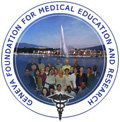Epidemiological characterization of hip fracture
Keywords:
hip fractures, epidemiology, agedAbstract
Introduction: Hip fracture is a problem for the Cuban health system for which large resources are allocated by the state; the aging population that afflicts society promotes growth and an even greater cost. Objective: to evaluate the epidemiological behavior of the hip fracture in the northwestern region of the Province of Villa Clara in 2018. Method: a descriptive cross-sectional study of epidemiological and sociodemographic type of all patients who went to the Hospital “Martires del 9 de Abril” of Sagua la Grande with hip fracture was carried out between January 1 and December 31, 2018. Results: a total of 119 hip fractures occurred, with a female predominance of 2: 1, an average age of 80.8 years and a fashion of 91 years, the majority over 70 years, inter-trochanteric fractures and the left side predominated. The incidence rates by municipalities and global show high results comparable with highly developed countries. Conclusions: the hip fracture in the northwest region of Villa Clara constitutes a serious and worrying health problem in which the participation of all the factors of society is necessary in order to minimize the negative impact that this disease plays.Downloads
References
1. Yadav L, Tewari A, Jain A, Essue B, Peiris D, Woodward M, et al. Protocol-based management of older adults with hip fractures in Delhi, India: a feasibility study. Pilot Feasibility Stud [Internet]. 2016 Mar [citado 10 Mar 2019];2:15. Disponible en: https://pilotfeasibilitystudies.biomedcentral.com/articles/10.1186/s40814-016-0056-0
2. Amigo Castañeda P, Rodríguez Díaz M, Castañeda Gueimonde CM. Comportamiento intrahospitalario entre las fracturas de cadera intracapsulares y las extracapsulares. Rev Cubana Ortop Traumatol [Internet]. 2012 Ene-Jun [citado 10 Mar 2019];26(1):17-27. Disponible en: http://scieloprueba.sld.cu/scielo.php?script=sci_arttext&pid=S0864-215X2012000100003&lng=es
3. Oficina Nacional de Estadísticas e Información. Población. En: Anuario Estadístico de Cuba 2016 [Internet]. La Habana: ONEI; 2017 [citado 10 Mar 2019]. Disponible en: http://www.onei.gob.cu/node/13608
4. Angulo Tabernero M, Aguilar Ezquerra A, Ungria Murillo J, Cuenca Espierrez J. Epidemiology of fractures of the proximal third of the femur: 20 years follow-up. Rev Fac Cien Med Univ Nac Cordoba [Internet]. 2015 [citado 10 Mar 2019];72(3):145-51. Disponible en: https://www.ncbi.nlm.nih.gov/pubmed/26913798
5. Li N, Liu HN, Gong XF, Zhu SW, Wu XB, He L. Epidemiological analysis of hospitalized patients with femoral neck fracture in a first-class hospital of Beijing. Beijing Da Xue Xue Bao Yi Xue Ban [Internet]. 2016 Apr [citado 10 Mar 2019];48(2):292-6. Disponible en: https://www.ncbi.nlm.nih.gov/pubmed/27080284
6. Driessen JH, Hansen L, Eriksen SA, van Onzenoort HA, Henry RM, van den Bergh J, et al. The epidemiology of fractures in Denmark in 2011. Osteoporos Int [Internet]. 2016 Jun [citado 10 Mar 2019];27(6):2017-25. Disponible en: https://www.ncbi.nlm.nih.gov/pmc/articles/PMC4863906/. https://dx.doi.org/10.1007/s00198-016-3488-8
7. Dinamarca-Montecinos JL, Améstica-Lazcano G, Rubio-Herrera R, Carrasco-Buvinic A, Vásquez A. Hip fracture. Experience in 647 Chilean patients aged 60 years or more. Rev Med Chil [Internet]. 2015 Dec [citado 10 Mar 2019];143(12):1552-9. Disponible en: https://www.ncbi.nlm.nih.gov/pubmed/26928617. https://doi.org/10.4067/S0034-98872015001200008
8. Flodin L, Laurin A, Lökk J, Cederholm T, Hedström M. Increased 1-year survival and discharge to independent living in overweight hip fracture patients: A prospective study of 843 patients. Acta Orthop [Internet]. 2016 [citado 10 Mar 2019];87(2):146-151. Disponible en: https://www.ncbi.nlm.nih.gov/pmc/articles/PMC4812076/. https://dx.doi.org/10.3109/17453674.2015.1125282
9. Horii M, Fujiwara H, Mikami Y, Ikeda T, Ueshima K, Ikoma K, et al. Differences in monthly variation, cause, and place of injury between femoral neck and trochanteric fractures: 6-year survey (2008-2013) in Kyoto prefecture, Japan. Clin Cases Miner Bone Metab [Internet]. 2016 Jan-Apr [citado 10 Mar 2019];13(1):19-24. Disponible en: https://www.ncbi.nlm.nih.gov/pmc/articles/PMC4869947/. https://dx.doi.org/10.11138/ccmbm/2016.13.1.019
10. Rodríguez Jiménez P, Fernández Alfonso J, Díaz Hernández O, Garrote Rodríguez I, Morales Rigau JM, Achiong Estupiñán FJ. Fallecidos por fractura de cadera. Provincia de Matanzas. Rev Méd Electrón [Internet]. 2009 [citado 18 Mar 2019];31(5):[aprox. 6 p.]. Disponible en: http://www.revmedicaelectronica.sld.cu/index.php/rme/article/view/651/pdf
11. Çankaya D, Yoldaş B, Çankaya E, Çakir Y, Aydin C, Tabak AY. Analysis of the hip fracture records of a central training and research hospital by selected characteristics. Turk J Med Sci [Internet]. 2016 Jan [citado 18 Mar 2019];46(1):35-41. Disponible en: https://www.ncbi.nlm.nih.gov/pubmed/27511330. https://doi.org/10.3906/sag-1406-150
12. Gosch M, Hoffmann-Weltin Y, Roth T, Blauth M, Nicholas JA, Kammerlander C. Orthogeriatric co-management improves the outcome of long-term care residents with fragility fractures. Arch Orthop Trauma Surg [Internet]. 2016 Oct [citado 18 Mar 2019];136(10):1403-9. Disponible en: https://www.ncbi.nlm.nih.gov/pmc/articles/PMC5025484/. https://dx.doir.org/10.1007/s00402-016-2543-4
13. Perera Rodríguez NR, Pérez Guerra E, Pérez García TJ, Ramos Díaz O. Incidencia de las fracturas de cadera en la provincia de Sancti Spíritus. Rev Cubana Ortop Traumatol [Internet]. 2002 Dic [citado 10 Mar 2019];16(1-2):44-47. Disponible en: http://scieloprueba.sld.cu/scielo.php?script=sci_arttext&pid=S0864-215X2002000100007&lng=es
14. Martínez López R, Moreno Navarro J, Goide Linares E, Fernández García D. Caracterización clínicoepidemiológica de pacientes con fracturas de cadera. MEDISAN [Internet]. 2012 Feb [citado 10 Mar 2019];16(2):182-188. Disponible en: http://scielo.sld.cu/scielo.php?script=sci_arttext&pid=S1029-30192012000200005
15. Quesada Musa JV, Delgado Rifá E, Tórrez Vázquez D, Gómez Silva Y. Morbilidad y mortalidad por fractura de cadera. Rev Cubana Ortop Traumatol [Internet]. 2011 Jul-Dic [citado 10 Mar 2019];25(2):136-148. Disponible en: http://scielo.sld.cu/scielo.php?script=sci_arttext&pid=S0864-215X2011000200004
16. Hernández Hernández B, Castillo Aliaga D. Caracterización de la fractura de cadera en pacientes geriátricos, enero 2012-mayo 2013. Multimed [Internet]. 2014 Ene-Abr [citado 10 Mar 2019];18(1):1-8. Disponible en: https://www.medigraphic.com/pdfs/multimed/mul-2014/mul141c.pdf
17. Suárez Monzón H, Yero Arniella LA, Rodríguez Fernández FR, Águila Tejeda G. Resultados de la atención continuada en el tratamiento de la fractura. Medisur [Internet]. 2016 Mar-Abr [citado 29 Abr 2019];14(2):173-179. Disponible en: http://scielo.sld.cu/scielo.php?script=sci_arttext&pid=S1727-897X2016000200011&lng=es&nrm=iso&tlng=es
18. Palomino L, Ramírez R, Vejarano J, Ticse R. Fractura de cadera en el adulto mayor: la epidemia ignorada en el Perú. Acta Méd Peruana [Internet]. 2016 Ene-Mar [citado 29 Abr 2019];33(1):15-20. Disponible en: http://www.scielo.org.pe/scielo.php?script=sci_arttext&pid=S1728-59172016000100004
19. Van der Velde RY, Wyers CE, Curtis EM, Geusens PP, van den Bergh JP, de Vries F, et al. Secular trends in fracture incidence in the United Kingdom between 1990 and 2012. Osteoporos Int [Internet]. 2016 Nov [citado 29 Abr 2019];27(11):3197-3206. Disponible en: https://www.ncbi.nlm.nih.gov/pmc/articles/PMC5035540/. https://dx.doi.org/10.1007/s00198-016-3650-3
20. Dhanwai DK, Dennison EM, Harvey NC, Cooper C. Epidemiology of hip fracture: Worlwide geographic variation [Internet]. 2011 Jan [citado 29 Abr 2019];45(1):15-22. Disponible en: https://www.ncbi.nlm.nih.gov/pmc/articles/PMC3004072/. https://dx.doi.org/10.4103/0019-5413.73656
Downloads
Published
How to Cite
Issue
Section
License
Authors who have publications with this journal agree to the following terms:
- Authors will retain their copyright and assign to the journal the right of first publication of their work, which will simultaneously be subject to a Creative Commons License / Attribution-Noncommercial 4.0 International (CC BY-NC 4.0) that allows third parties to share the work as long as its author and first publication in this journal are indicated.
- Authors may adopt other non-exclusive license agreements for distribution of the published version of the work (e.g., depositing it in an institutional repository or publishing it in a monographic volume) as long as the initial publication in this journal is indicated.
- Authors are allowed and encouraged to disseminate their work through the Internet (e.g., in institutional telematic archives or on their web page) before and during the submission process, which can produce interesting exchanges and increase citations of the published work. (See The effect of open access).





 december 15 2025
december 15 2025


